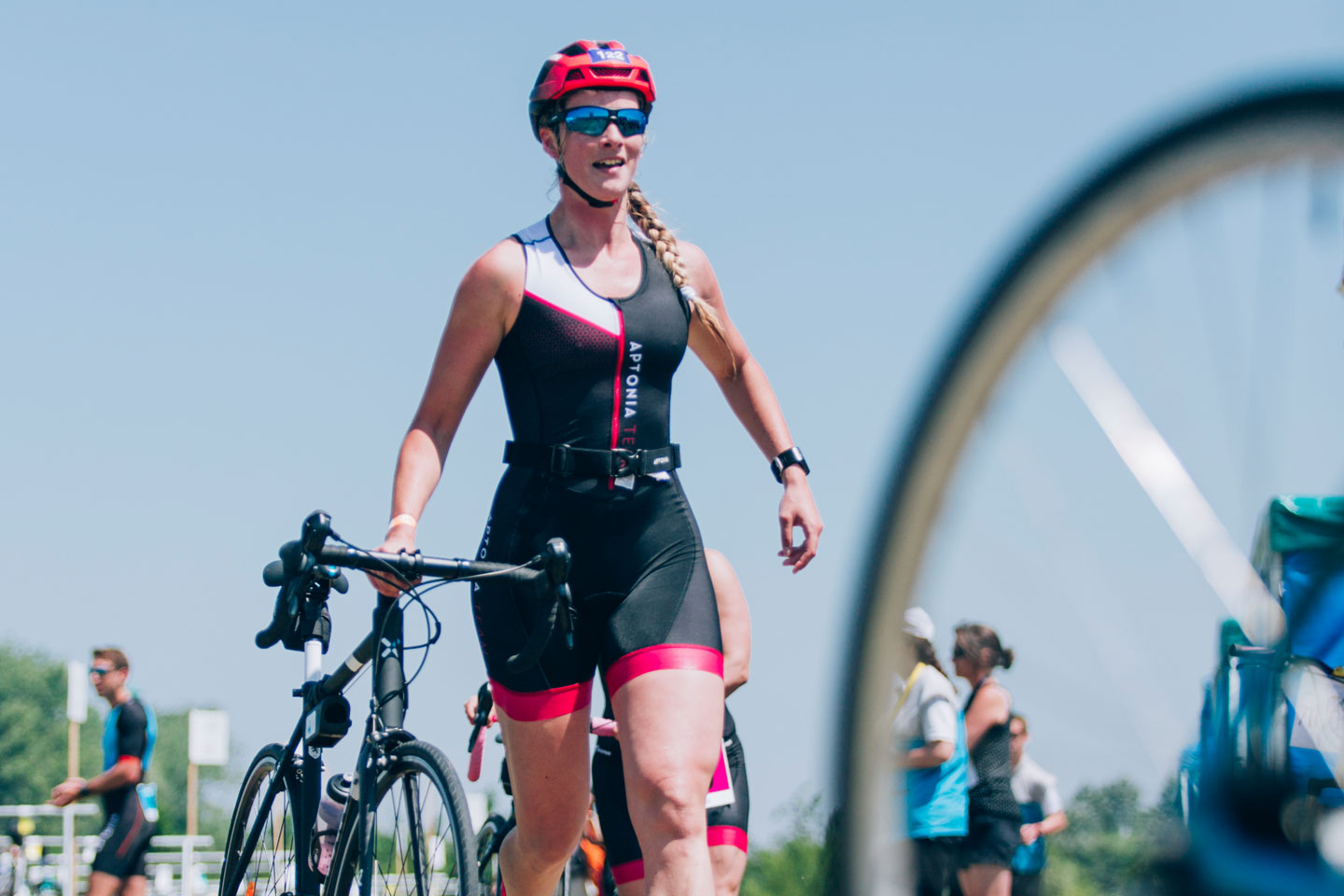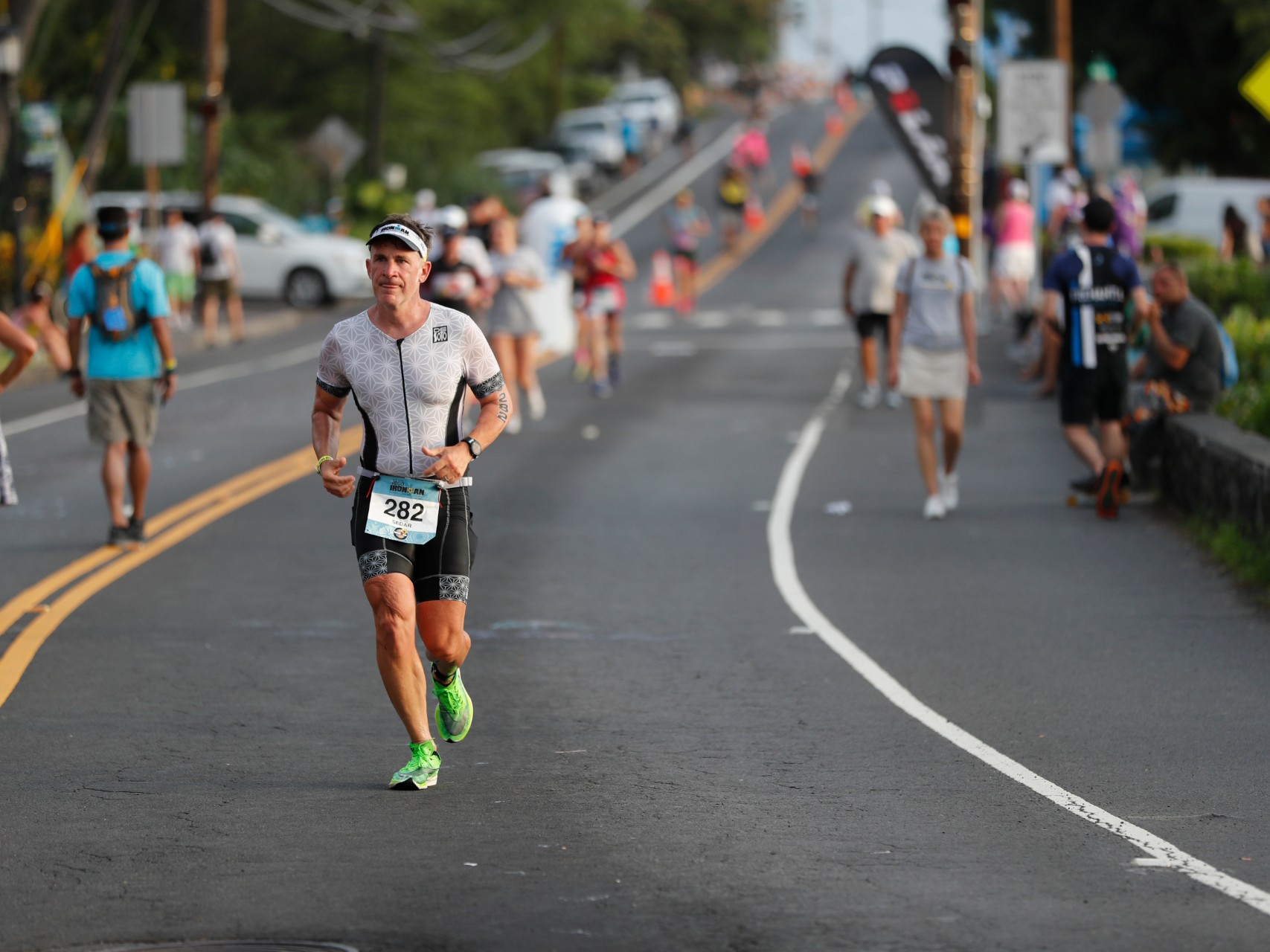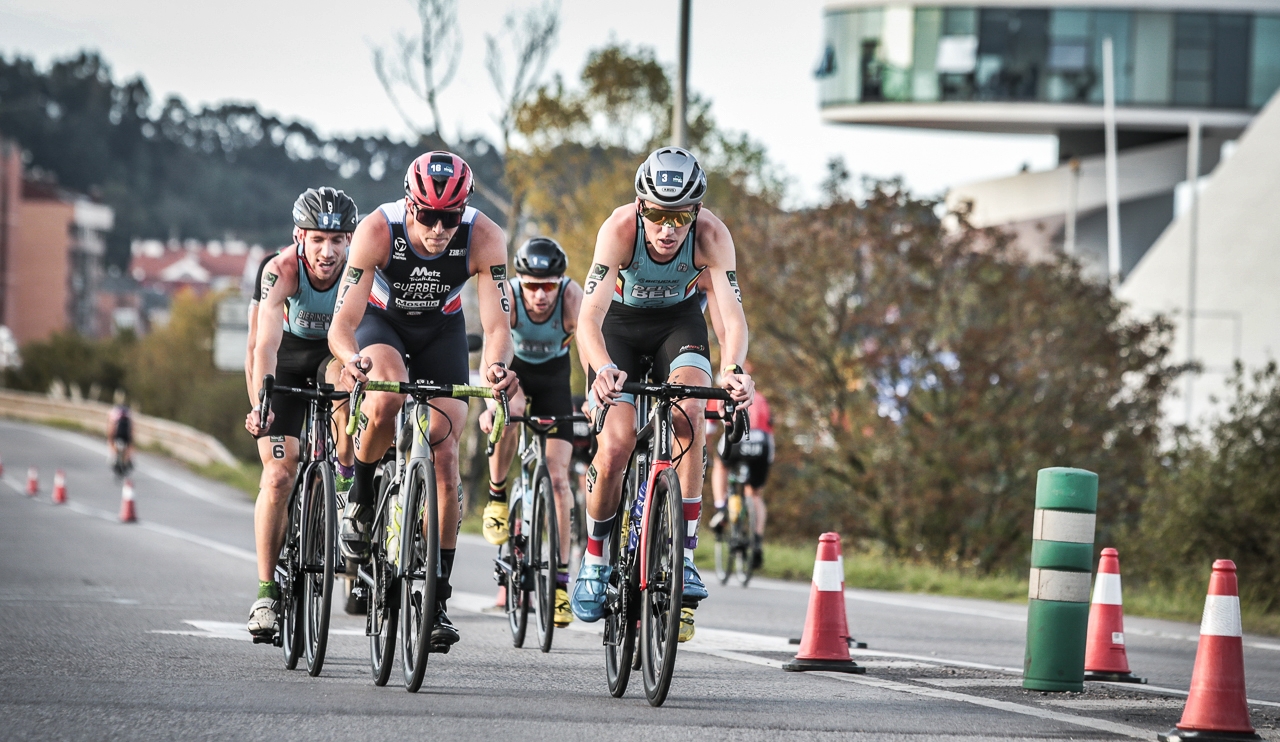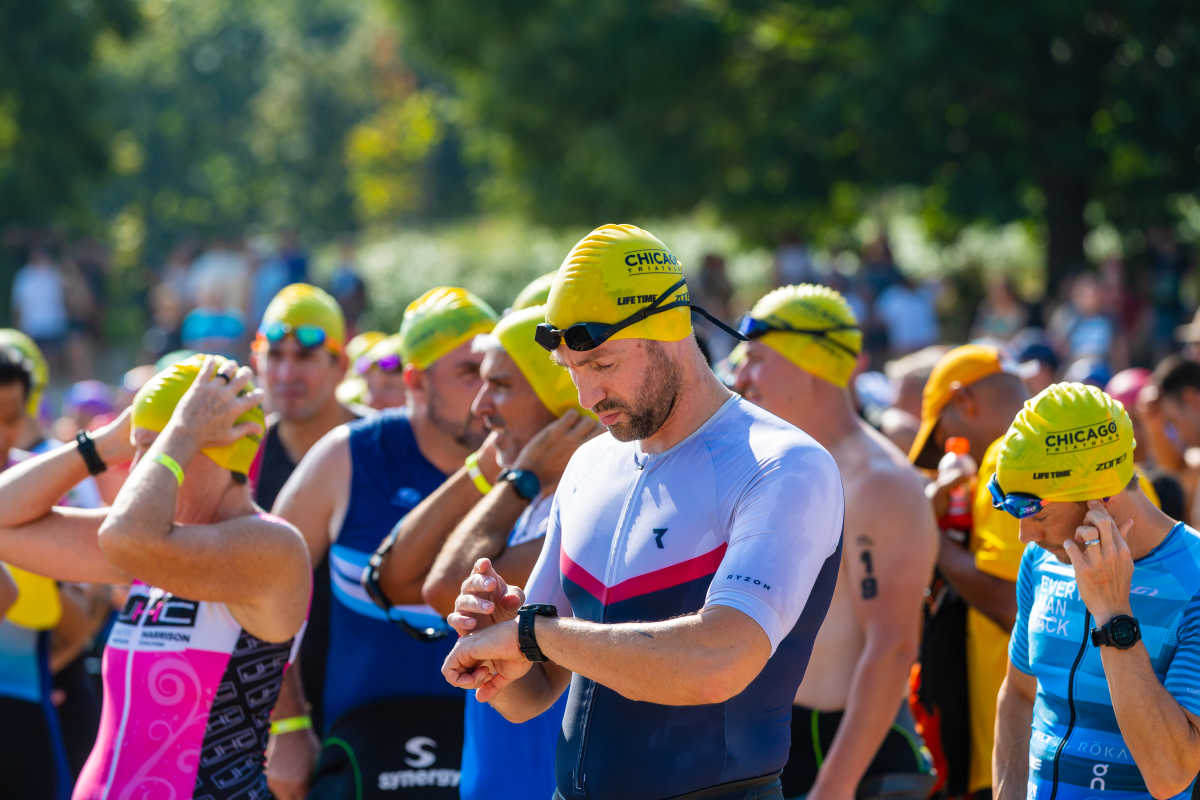

Featured
What Is A Brick In Triathlon Training
Modified: August 21, 2023
Learn what a brick in triathlon training is and how it can improve your performance. Discover the benefits of incorporating this featured workout into your training regimen.
Introduction
Welcome to the exciting world of triathlon training! If you’re a beginner or even a seasoned triathlete, you may have come across the term “brick training” during your research. But what exactly is a brick workout?
In triathlon training, a brick workout refers to the practice of combining two different disciplines, typically cycling and running, into one training session. The name “brick” comes from the feeling of having heavy legs, as if they were made of bricks, when transitioning from one activity to another. It’s a unique training method that simulates the physical and mental challenges faced during the race.
The purpose of a brick workout is to help triathletes adapt to the demanding transition between swim-bike and bike-run segments. By training your body to perform well under fatigue, you’ll be better prepared to handle the physical and mental demands of race day.
Brick workouts are commonly used in triathlon training programs, particularly as the race day approaches. They provide an effective way to improve your cardiovascular endurance, build muscular strength, enhance your ability to switch between different activities, and develop mental resilience.
During a brick workout, the muscles used in the first activity become fatigued. This fatigue then carries over into the second activity, simulating the feeling of transitioning from one leg of the race to another. By replicating this experience in training, you can better understand and prepare for the unique challenges of the race.
Now that you understand the basics of brick workouts, let’s explore the benefits and how to incorporate them into your training routine. Whether you’re aiming for your first triathlon or looking to improve your performance, brick training can be a valuable addition to your regimen.
Definition of a Brick Workout
A brick workout is a training session in the world of triathlon that involves combining two different disciplines, typically cycling and running, into one continuous session. The term “brick” is derived from the sensation of having heavy and fatigued legs during the transition from one activity to another. This unique form of training aims to simulate the physical and mental challenges faced during the race.
The structure of a brick workout varies depending on the athlete’s training goals and the specific race distance they are preparing for. Generally, a brick workout begins with a predetermined duration or distance of cycling followed immediately by a run. The intensity and duration of each segment can be adjusted based on the athlete’s fitness level and training plan.
Brick workouts primarily focus on the transition between two activities, as this is a crucial aspect of triathlon racing. The transition from the cycling to the running phase can be particularly challenging due to the shift in muscles used and the strain on the lower body. By incorporating brick workouts into your training routine, you can develop the necessary conditioning and mental fortitude to handle this transition effectively.
Brick workouts are not limited to cycling and running combinations. They can also include swim-bike or swim-run combinations, depending on the race format you are preparing for. The goal is to train your body to adapt to the unique demands of the triathlon race, where you need to seamlessly transition between different activities, often in a state of fatigue.
One important aspect to keep in mind is the order of the activities in a brick workout. It is recommended to mimic the race sequence, starting with the discipline you will encounter first on race day. For example, if the race begins with a swim, it is advisable to start your brick workouts with a swim-bike combination.
The duration and frequency of brick workouts will depend on your current fitness level, training goals, and the distance of your target race. Beginners may start with shorter and less intense brick sessions, gradually increasing the duration and intensity as their fitness improves.
In the next section, we will explore the purpose and benefits of incorporating brick workouts into your triathlon training routine. Understanding these benefits will further motivate you to embrace this unique training technique and reap the rewards it offers.
Purpose of Brick Training
The purpose of incorporating brick training into your triathlon regimen is to prepare your body and mind for the specific challenges of the race day transition. Here are the key purposes behind incorporating brick workouts:
1. Adaptation to transition: Brick workouts help you become familiar with the unique sensation of transitioning between two different activities. By simulating the physical and mental demands of shifting from cycling to running, or swimming to biking, you can better prepare yourself for the race day experience.
2. Muscle conditioning: Brick workouts provide an excellent opportunity to condition and strengthen the specific muscles used during the transition between disciplines. Moving from cycling to running, for example, engages different muscles and requires your body to quickly adjust. By incorporating brick workouts, you can enhance the strength and endurance of these muscles, improving your overall performance.
3. Cardiovascular endurance: Triathlons are endurance events that require a high level of cardiovascular fitness. Performing a brick workout challenges your cardiovascular system by continuously pushing your heart rate and oxygen consumption. This helps improve your overall cardiovascular endurance, allowing you to sustain a higher level of performance throughout the race.
4. Mental fortitude: Brick workouts not only test your physical capabilities but also your mental strength. Transitioning from one activity to another, especially when fatigued, requires mental resilience and focus. By regularly incorporating brick workouts into your training routine, you can develop the mental fortitude needed to push through the challenging moments during a race.
5. Race simulation: Brick training is an effective way to simulate the physical and mental demands of a triathlon race. It allows you to practice strategies for pacing, nutrition, hydration, and gear transitions, ensuring that you are well-prepared for the real race. Through these simulations, you can identify any potential issues or areas for improvement, providing an opportunity to refine your race-day strategy.
By understanding the purpose of brick training, you can fully grasp the importance of incorporating it into your triathlon preparation. The next section will delve into the numerous benefits that brick workouts offer, further highlighting why they are an integral part of any triathlete’s training routine.
Benefits of Brick Training
Brick training offers a wide array of benefits that can significantly enhance your performance in triathlon races. Let’s explore some of the key advantages:
1. Improved race-day performance: Brick workouts are specifically designed to simulate the physical and mental demands of race day transitions. By regularly training in this manner, you can develop the ability to smoothly transition between disciplines, leading to improved overall race performance.
2. Enhanced muscular endurance: Brick workouts challenge your muscles by asking them to repeatedly perform at a high level in quick succession. This type of training improves the endurance of both the primary muscles used in each discipline and the supporting muscles essential for maintaining proper form throughout the race.
3. Increased cardiovascular fitness: Triathlons demand a high level of cardiovascular endurance. Incorporating brick workouts into your training routine helps elevate your heart rate and improve your oxygen-carrying capacity, leading to greater overall cardiovascular fitness.
4. Efficient transition practice: Transitioning smoothly and efficiently between disciplines is critical in a triathlon. Brick workouts provide an opportunity to practice your transition processes, such as changing shoes, refueling, and mentally switching gears, allowing you to fine-tune your transitions and minimize time wasted during the race.
5. Mental resilience: Brick workouts teach you to push through fatigue and discomfort, helping you develop mental resilience. This mental toughness is essential in a triathlon, as it allows you to stay focused and maintain a positive mindset during challenging moments in the race.
6. Confidence-building: Successfully completing challenging brick workouts can boost your confidence and belief in your own abilities. The mental and physical strength gained from these training sessions can translate into increased self-assurance on race day.
7. Training specificity: Brick training allows you to mimic race-day conditions more closely, making your training more specific to the demands of the triathlon. This specificity ensures that your body and mind are well-prepared for the unique challenges you’ll face during the race.
8. Time efficiency: Combining two disciplines into a single workout saves time, making brick training an efficient way to fit both cycling and running into your training schedule. This can be particularly beneficial for time-strapped individuals.
Incorporating brick workouts into your training routine offers numerous benefits that directly contribute to improved performance and race-day success. The next section will outline how you can effectively incorporate brick workouts into your triathlon training program.
How to Incorporate Brick Workouts
Incorporating brick workouts into your triathlon training program requires careful planning and consideration. Here are some steps to effectively incorporate these workouts into your routine:
1. Determine your training goals: Clarify your training objectives, whether it’s improving your transition time, enhancing your endurance, or preparing for a specific race distance. Having clear goals will help you structure your brick workouts accordingly.
2. Gradually increase intensity: If you’re new to brick training, start with shorter, low-intensity sessions. As your fitness improves, gradually increase the duration and intensity of each discipline within the workout. This progression will help your body adapt over time without risking injury or overwhelming fatigue.
3. Schedule strategically: Plan your brick workouts strategically in your training schedule. Ideally, perform them after your rest day or a light training day when your muscles are fresh. This will ensure you have enough energy for the challenging workout.
4. Start with shorter distances: If you’re new to brick workouts, begin with shorter distances for each discipline. For example, you might start with a 10-15 minute bike ride immediately followed by a 5-10 minute run. Gradually increase the distances as your body adapts and becomes more comfortable with the transitions.
5. Mimic race conditions: Try to replicate race-day conditions during your brick workouts. Practice wearing the same gear, using the same nutrition plan, and simulating the transitions as closely as possible. This will familiarize your body and mind with the race environment, improving your ability to handle the real event.
6. Focus on transition practice: Dedicate some training sessions solely to transition practice. Set up a mini-transition area at home or at the gym and practice efficiently switching between your cycling and running equipment. Focus on smooth and quick transitions to save valuable time on race day.
7. Incorporate varied brick workouts: Explore different combinations of disciplines in your brick workouts. In addition to the standard bike-run or swim-bike combinations, mix it up by including swim-run or bike-swim sessions. This variety keeps your training fresh and challenges your body in different ways.
8. Listen to your body: Pay attention to any signs of fatigue or excessive muscle soreness. It’s vital to listen to your body and give it adequate rest and recovery between brick workouts. Recovery days and proper nutrition are crucial to avoid overtraining and maximize the benefits of your training.
By following these guidelines, you can effectively incorporate brick workouts into your triathlon training program. The next section will provide a sample brick workout session to help you get started.
Sample Brick Workout Session
To give you an idea of a typical brick workout session, here’s a sample session that combines cycling and running:
Warm-up:
- Start with a 10-15 minute easy jog or dynamic warm-up exercises to prepare your body for the workout.
Main Session:
- Cycling: Hop on your bike and start with a 40-minute moderate-intensity ride. Maintain a steady pace, focusing on maintaining proper form and cadence.
- Transition: Quickly transition from cycling to running. Practice removing your cycling shoes, putting on your running shoes, and getting moving without wasting unnecessary time.
- Running: Start with a 20-minute run immediately after the bike ride. Begin at a comfortable pace and gradually increase your speed throughout the run. Focus on maintaining good running form and a steady breathing rhythm.
Cool-down:
- Finish the session with a 10-minute cool-down jog or a walk to help your body recover and reduce muscle soreness.
Keep in mind that this is just a sample workout, and you can adjust the duration and intensity based on your fitness level and training goals. As you progress, you can gradually increase the duration of the cycling and running segments to further challenge yourself.
Remember to always listen to your body and adjust the session based on your fitness and recovery level. If you’re new to brick workouts, start with shorter durations and lower intensities, gradually building up over time.
Incorporate this sample brick workout session into your training routine once or twice a week, depending on your schedule and training plan. It will help familiarize your body with the unique demands of transitioning between cycling and running, improving your overall triathlon performance.
Now that you have an idea of a sample brick workout session, let’s move on to some tips for a successful brick training experience.
Tips for Successful Brick Training
Brick training can be challenging but also incredibly rewarding. Here are some tips to help you make the most of your brick workouts and achieve success in your triathlon training:
1. Gradually increase intensity: Start with shorter brick workouts and gradually increase the intensity as your fitness level improves. This will help prevent overexertion and reduce the risk of injury.
2. Incorporate adequate recovery: Allow for sufficient recovery between brick workouts to allow your muscles to repair and adapt. Listen to your body and take rest days when needed to avoid overtraining.
3. Focus on proper nutrition and hydration: Fuel your body with the right nutrients before, during, and after brick workouts. Adequate hydration and balanced nutrition will support optimal performance and aid in your recovery.
4. Practice your transitions: Allocate specific training sessions solely to practice your transitions. Set up a transition area at home or at the gym and practice smoothly and efficiently transitioning between disciplines to save valuable time on race day.
5. Embrace the discomfort: Brick workouts can be physically and mentally challenging, especially in the transition phase. Embrace the discomfort and use it as an opportunity to develop mental resilience and improve your ability to push through tough moments during the race.
6. Stay mentally engaged: Maintain focus and mental engagement throughout the entire brick workout. This will help you maintain proper form, pace yourself effectively, and make quick decisions during transitions.
7. Vary the combinations: Mix up the disciplines in your brick workouts to keep your training varied and challenging. Incorporate swim-bike, bike-run, swim-run, and even triathlon-specific brick workouts to mimic race conditions and improve your overall fitness.
8. Practice pacing: Use your brick workouts to practice pacing strategies for each discipline. Find a sustainable and comfortable pace that allows you to perform well in both the cycling and running segments of the workout.
By following these tips, you can optimize your brick training sessions and make significant progress in your triathlon preparation. Remember, consistency, patience, and perseverance are key to reaching your goals.
In the next section, we will highlight some common mistakes to avoid during brick training to ensure a productive and injury-free experience.
Common Mistakes to Avoid During Brick Training
Brick training is a crucial component of triathlon preparation, but it’s important to approach it with care and avoid common mistakes that can hinder your progress and potentially lead to injuries. Here are some common mistakes to avoid during your brick workouts:
1. Skipping the warm-up: Neglecting to warm up properly before a brick workout can increase the risk of muscle strains and other injuries. Always start with a dynamic warm-up or a light jog to prepare your body for the training session.
2. Neglecting recovery and rest days: Overtraining can hinder your progress and increase the risk of injuries. Make sure to incorporate rest days and recovery periods into your training plan to give your body the time it needs to repair and adapt.
3. Going too hard or too fast: It’s important to remember that brick workouts are not races. Avoid the temptation to go all-out during each segment. Focus on maintaining a pace that allows you to complete the full workout without excessive fatigue or compromising form.
4. Ignoring nutrition and hydration: Proper fueling and hydration are essential for optimal performance and recovery. Neglecting nutrition and hydration during brick workouts can lead to fatigue, poor performance, and slower recovery. Be mindful of your nutritional needs and hydrate adequately throughout your workout.
5. Skipping transition practice: Transitions are a critical part of triathlon racing, and neglecting to practice them can cost you valuable time on race day. Set aside time during your brick workouts specifically for transition practice to improve your efficiency and familiarize yourself with the process.
6. Avoiding variety: While it’s important to have consistency in your training, monotony can hinder your progress. Avoid sticking to the same routes and distances repeatedly. Incorporate variety by choosing different cycling and running routes and changing up the combinations of disciplines in your workouts.
7. Neglecting recovery between segments: During brick workouts, it’s common to feel fatigued after one discipline and want to rush into the next without adequate rest. Allow yourself a few minutes to recover between segments, catch your breath, and mentally prepare for the next activity.
8. Neglecting flexibility and mobility: Flexibility and mobility are essential for injury prevention and efficient movement during triathlon training. Incorporate regular stretching and mobility exercises into your routine to ensure proper muscle activation and range of motion.
Avoiding these common mistakes will not only improve the effectiveness of your brick workouts but also reduce the risk of injury and help you progress towards your triathlon goals. Consistency, proper preparation, and a mindful approach will go a long way in maximizing the benefits of your brick training sessions.
In the final section, we will wrap up our discussion on brick workouts and recap their significance in triathlon training.
Conclusion
Brick training is a vital component of any triathlon training program. By combining two different disciplines, typically cycling and running, into one continuous workout, brick training simulates the physical and mental challenges of race-day transitions.
Throughout this article, we explored the definition of a brick workout, its purpose, and the numerous benefits it offers. Brick training helps triathletes adapt to the demands of transitioning between disciplines, improves muscular endurance, enhances cardiovascular fitness, and develops mental fortitude.
To incorporate brick workouts successfully, it’s important to gradually increase intensity, schedule strategically, focus on nutrition and hydration, and practice efficient transitions. Varying the combinations of disciplines and listening to your body are also crucial for effective brick training.
Avoiding common mistakes such as skipping warm-ups, neglecting recovery, going too hard or too fast, and avoiding variety will help you get the most out of your brick workouts. By avoiding these mistakes and embracing the challenges, you can optimize your training and prepare yourself for race-day success.
Incorporating brick workouts into your triathlon training routine requires dedication, consistency, and a willingness to push through discomfort. It’s about building both physical and mental resilience, honing your skills, and preparing your body and mind for the unique demands of triathlon racing.
So lace up your shoes, hop on your bike, and challenge yourself with great determination. Embrace the heavy legs, embrace the fatigue, and know that each brick workout brings you one step closer to becoming a stronger, more well-rounded triathlete.
Incorporate brick training into your regimen, and watch as your performance improves and you conquer the challenges of triathlon racing with greater ease and confidence. Remember, the more bricks you lay in your training, the stronger your foundation becomes for a successful triathlon journey.









